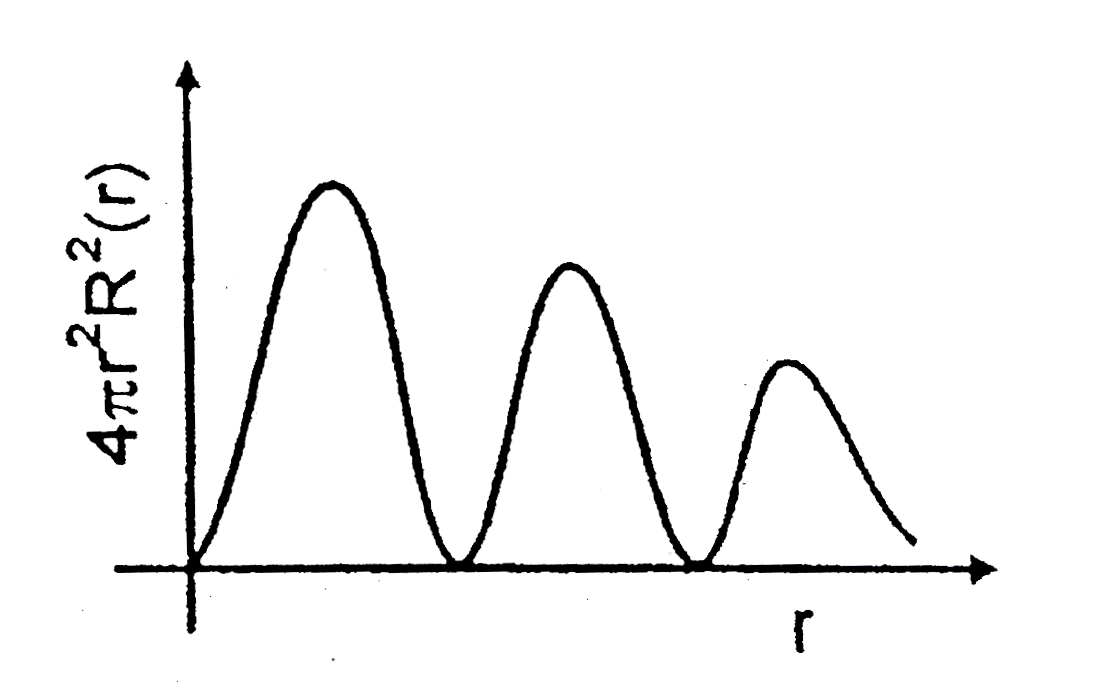According to qauntum mechanical model of H-like species, and electron can be represented by a wave function which contain all dynamic information about the electron. The nature of wave function depends on the type of the orbital to which the electron belongs. For an orbital
Where, = radial distance from nucleous,
The number of radial and angular nodes possible for the orbital given above are respectively
zero,zero
The correct Answer is:C
For , if implies given function represents an s-orbital.
From the given function total number of radial nodes obtained are .
Topper's Solved these Questions
Similar Questions
Calcuted the distance of spherical nodes for '3s' orbital from nucleus ?
R3s=19√3a3/20(6−6σ+σ2)eσ2 Where σ=2rna0
View SolutionFor a 3s - orbital, value of Φ is given by following realation:
Ψ(3s)=19√3(1a0)3/2(6−6σ+σ2)e−σ/2, where σ=2r.Z3a0
What is the maximum radial distance of node from nucleus?
View Solution
Knowledge Check
According to qauntum mechanical model of H-like species, and electron can be represented by a wave function (ψ) which contain all dynamic information about the electron. The nature of wave function depends on the type of the orbital to which the electron belongs. For an orbital
ψ=[√281√3π](1a0)3/2(27−18σ+2σ2)eσ3
Where, σ=(Zra0),r = radial distance from nucleous, a0=52.9±
The orbital could possibly beA4sB4pC3sD3pAccording to qauntum mechanical model of H-like species, and electron can be represented by a wave function (ψ) which contain all dynamic information about the electron. The nature of wave function depends on the type of the orbital to which the electron belongs. For an orbital
ψ=[√281√3π](1a0)3/2(27−18σ+2σ2)eσ3
Where, σ=(Zra0),r = radial distance from nucleous, a0=52.9±
Which of the following represents the position of one of the radial nodes?Ar=12(3+√3)a0Br=12(3−√3)a0Cr=32(3−√6)a0Dr=32(3+√3)a0For a 3s-orbital
Φ(3s)=1a√3(1a0)3/2(6−6σ+σ2)∈−σ/2
where σ=2rZ3aσ
What is the maximum radial distance of node from nucleus?A(3+√3)aσZBaσZC32(3+√3)aσZD3aσZ
For an orbital ,
Ψ300=181√3π(za0)3/2[27−18u+2u2]exp(−u3) where u=zra0
What is the maximum radial distance of node from nucleus of He+ ion ?
View SolutionFor an orbital in B+4 radial function is :
R(r)=19√6(za0)34(4−σ)σe−σ/2
where σ=Zra0 and a0=0.529Å,Z = atomic number, r= radial distance from nucleus.
The radial node of orbital is at distance from nucleous.
View SolutionThe wave function for an orbital is H-atom is given as
ψ=(√281√π)(1a0)32(6−ra0)(ra0)er3a0.sinθsinϕ
The orbital is :
View SolutionGiven the H−atom Rn,l=19√3(1ao)3/2(6−6σ+σ2)e−σ/2
where σ=2Zrnao,ao=0.53Å
Select the correct statement for the given orbital ?

View SolutionThe Schrodinger wave equation for hydrogen atom of 4s- orbital is given by :
Ψ(r)=116√4(1a0)3/2[(σ2−1)(σ2−8σ+12)]e−σ/2 where a0=1st Bohr radius and σ=2ra0 . The distance from the nucleus where there will be no radial node will be :
View Solution
